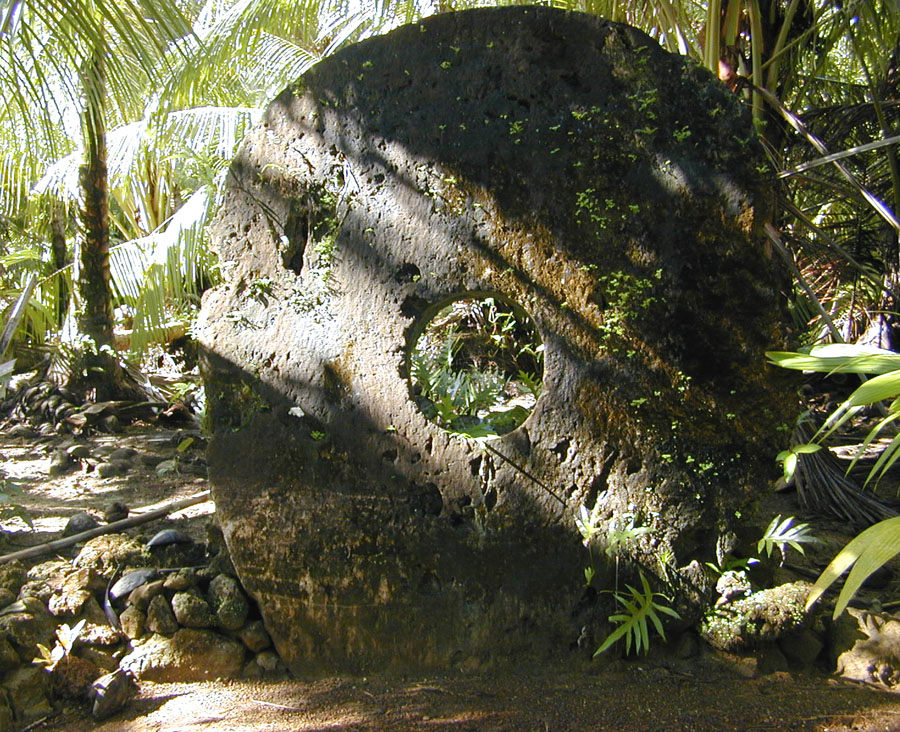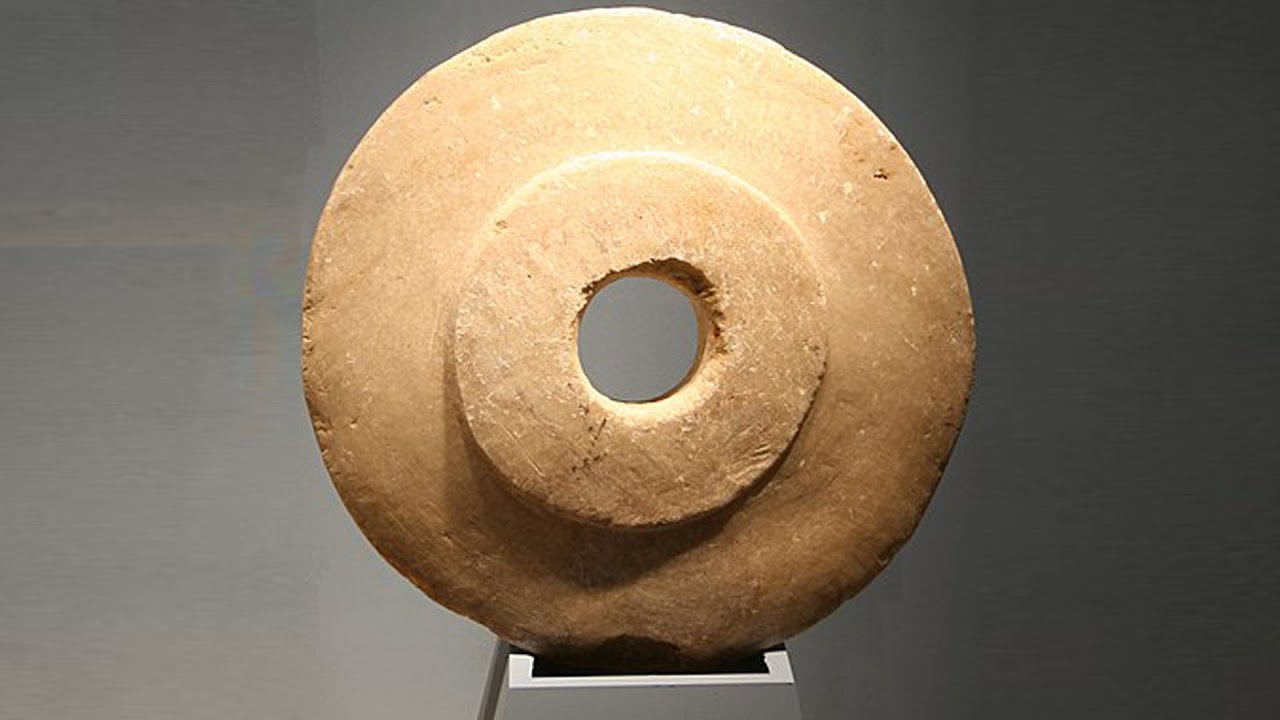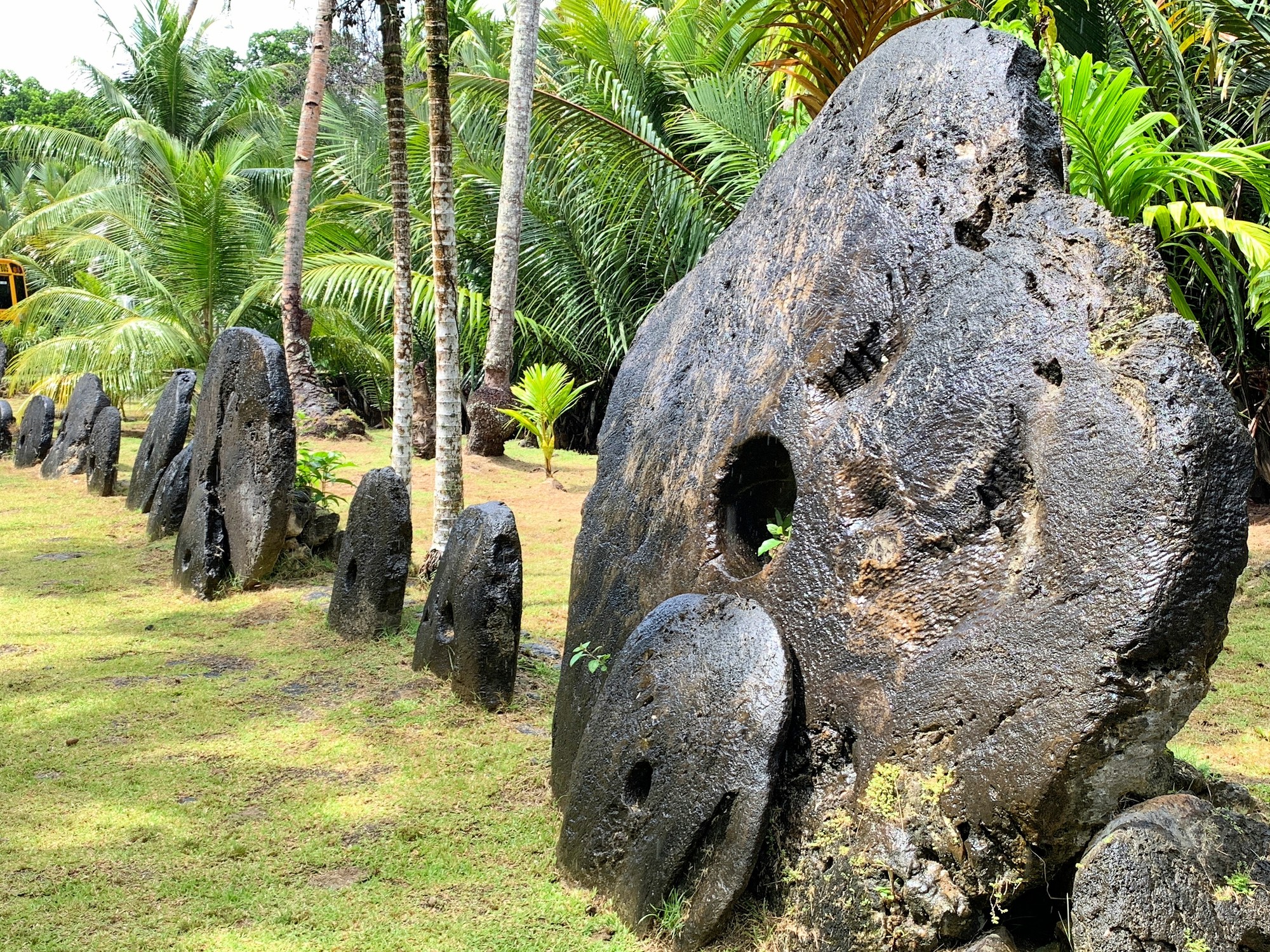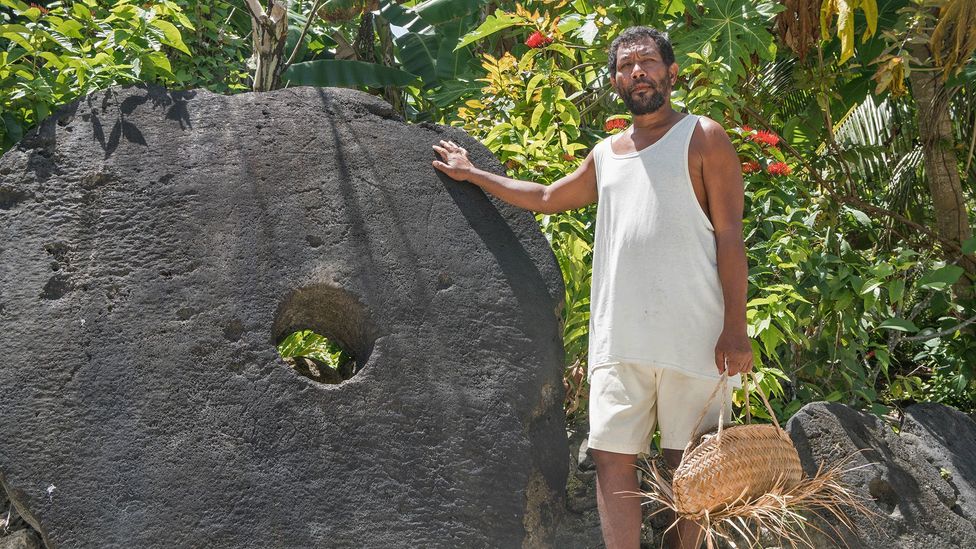Rai Stones - Yap Island's Mysterious Giant Money Stones
Human societies frequently assign value to things based on factors like scarcity. This clearly holds true in the case of the enormous Yap money stones aka rai stones. On the island of Yap, there are no limestone deposits, so one can only imagine the effort required to move a 9000-pound stone "coin" over hundreds of miles of open ocean in canoes and rafts.
Author:Dr. Felix ChaosphereReviewer:Xander OdditySep 30, 20220 Shares190 Views

Human societies frequently assign value to things based on factors like scarcity. This clearly holds true in the case of the enormous Yap money stones aka Rai stones.
On the island of Yap, there are no limestone deposits, so one can only imagine the effort required to move a 9000-pound stone "coin" over hundreds of miles of open ocean in canoes and rafts.
Rai Stones Of Yap Island
Local legend has it that between 500 and 600 years ago, a man by the name of Anagumang launched an expedition from his home island of Yap to the 300-mile-away island of Palau.
The abundance of limestone resources in Palau instantly perplexed the men of Yap. In exchange for goods and services, the Palauans allowed the men of Yap to quarry the rock, creating an unusual economic relationship between the two islands.
Although initially seen as novelty items, these stones soon came to be accepted forms of payment on Yap. Fish-shaped stones were first carved into stone, but subsequently the slightly more useful disc shape took hold. The primary form of money up to the 20th century was stone.
Speculators were drawn to Rai stones as they were to any currency. Using contemporary equipment that was purchased from Hong Kong, American sailor and adventurer David Dean O'Keefe began manufacturing Rai stones in large quantities.
Naturally, this technique led to a devaluation of the currency, demonstrating that even extremely reliable money is susceptible to inflation.
Today, the Oceanic Culture Museum in Okinawa and the Smithsonian Museum of Natural History in Washington, D.C. both display Rai stones.
Technology Used By The Yap Stones
The rai and distributed ledger currencies have some intriguing parallels. Similar to Bitcoin, the rai was thought to be scarce, which gave it value.
Getting fresh rai was difficult, much as mining Bitcoin takes a lot of time and work. The limestone discs were transported over the oceans from the island of Palau, which is located 400 km away from the island of Yap.
The trip to get the stones to Yap was perilous, and several perished in the process. They became rare and expensive as a result. But in 1840, there were more than 13,000 Rai on the island of Yap, up from a comparatively low number.
The Yapese people have extraordinary maritime talents. At the time, moving these large, hefty stones was exceedingly challenging. (However, they have a far smaller negative impact on the environment than Bitcoin mining does.)
How Does The Distribution Of Ancient Stone Coins Work?
Imagine a group of enormous, circular rai stones in the middle of a Yapese village. Let's imagine you owned one of the stones and you struck a deal to exchange them; as a result, the stone is now yours. However, the stone remained in place and no money was exchanged.
Everyone in the village now knows that the stone money changed hands and now belongs to you because everyone was there at the exchange, and this information is recorded in the oral ledger. Everyone has faith in the system, and maintaining it is in everyone's best interests.
Because of the widespread confidence, the rai worked like money. In contrast to the way today's financial system works, where you have to trust the person who owns and runs the ledger, the rai did not have a leader or an institution that ran and owned the ledger.
The Yap community had to have faith that everyone would uphold the oral ledger. Nothing was recorded. Because it was the only way to keep history and knowledge alive, the oral tradition had to be kept and trusted.
The idea of the rai's old and abstract stone money system seems oddly futuristic. Bitcoin also depends on a community's dispersed trust. Natural computer code is devoid of human meddling.
However, for the system to function, users must have confidence in the security of the computer code. For instance, in the event of a hack or a change in social mores, Bitcoin would be even less valuable than it is at the moment.
There is no indication that the blockchain, which is the foundation of Bitcoin, is losing its reliability. In fact, blockchain technology is becoming more popular and is without a doubt the future platform.
People are eager to invest in Bitcoin and have faith in its unique trust pattern, which shows that the computer code has meaning.
One of the most valuable Rai stones, according to local lore, never even made it to Yap since it was lost at sea during a severe storm. The massive stone is currently 150 kilometers from its intended location on the Pacific Ocean's floor.
Even though they couldn't see it, the islanders agreed that this specific rai stone was now very valuable.
Future-Oriented Lessons
The emergence and fall of the rai demonstrates that distributed ledger technology is not really novel. It also serves as a reminder that, as owners of Sony Betamax VCRs will recall, even the best technology isn't always adopted.
It also serves as a reminder of the negative effects of changing a currency arrangement (e.g., debasing, inflating). You've observed it with fiat money. Let's fightit using digital currency.
Otherwise, future generations will have just as much trouble remembering Bitcoin as you have trouble remembering Yap money.

Rai Stones: The Most Mysterious Currency in History
People Also Ask
Are Rai Stones Still Used?
The Yapese still exchange rai stones in an old-fashioned manner, despite the fact that modern money has taken the place of the stones as the standard form of payment. They appear on regional license plates and are a national symbol.
How Much Are Rai Stones Worth?
Even the smaller stones are generally thought to be costly; a 10-inch coin is worth roughly $6,000. The US dollar is currently the most traded currency in Yap. When a transaction is done, the rai stones that were used as money usually stay where they were.
Are Rai Stones Rare?
Among the Yap people, who make up the majority, the majority of Rai stone examples are revered as sacred and uncommon. The largest Rai stones are over 12 feet in diameter and can weigh up to two tons. Technically speaking, stones are the largest coins in the world because they are used as cash.
Conclusion
The origin of the use of these rai stones as currency is unknown. However, the Yapeans eventually came to understand what most communities understand. They required a means of payment that could be used by anyone.
And like many communities, the Yapeans determined that their version of gold, which they had and thought was beautiful, was money.

Dr. Felix Chaosphere
Author
Dr. Felix Chaosphere, a renowned and eccentric psychiatrist, is a master of unraveling the complexities of the human mind. With his wild and untamed hair, he embodies the essence of a brilliant but unconventional thinker. As a sexologist, he fearlessly delves into the depths of human desire and intimacy, unearthing hidden truths and challenging societal norms.
Beyond his professional expertise, Dr. Chaosphere is also a celebrated author, renowned for his provocative and thought-provoking literary works. His written words mirror the enigmatic nature of his persona, inviting readers to explore the labyrinthine corridors of the human psyche.
With his indomitable spirit and insatiable curiosity, Dr. Chaosphere continues to push boundaries, challenging society's preconceived notions and inspiring others to embrace their own inner tumult.

Xander Oddity
Reviewer
Xander Oddity, an eccentric and intrepid news reporter, is a master of unearthing the strange and bizarre. With an insatiable curiosity for the unconventional, Xander ventures into the depths of the unknown, fearlessly pursuing stories that defy conventional explanation. Armed with a vast reservoir of knowledge and experience in the realm of conspiracies, Xander is a seasoned investigator of the extraordinary.
Throughout his illustrious career, Xander has built a reputation for delving into the shadows of secrecy and unraveling the enigmatic. With an unyielding determination and an unwavering belief in the power of the bizarre, Xander strives to shed light on the unexplained and challenge the boundaries of conventional wisdom. In his pursuit of the truth, Xander continues to inspire others to question the world around them and embrace the unexpected.
Latest Articles
Popular Articles

